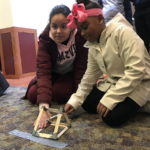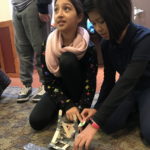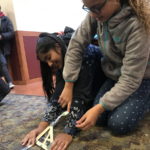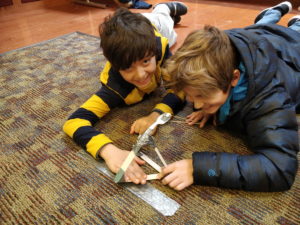On Friday, November 15th, two classes (~30 students) from the Edison K-8 School came for our last STEM Field Trip of the semester. The visiting students were fifth graders; many of whom had come to last year’s field trip, where they learned about circuits and energy. For this year’s field trip, the students focused on engineering, specificall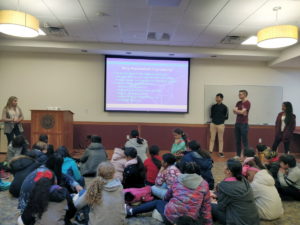 y mechanical engineering. The students were first introduced to engineering and the design process and then Northeastern’s Chapter of ASME (American Society of Mechanical Engineers) talked to the students about mechanical engineering specifically – what it is, what it means to be a mechanical engineer, and what the student organization and it’s members do on campus. Thank you to the following ASME members for presenting and helping throughout the day!: Victoria, Tom, Celine, Shannon, and Kevin.
y mechanical engineering. The students were first introduced to engineering and the design process and then Northeastern’s Chapter of ASME (American Society of Mechanical Engineers) talked to the students about mechanical engineering specifically – what it is, what it means to be a mechanical engineer, and what the student organization and it’s members do on campus. Thank you to the following ASME members for presenting and helping throughout the day!: Victoria, Tom, Celine, Shannon, and Kevin.
The visiting students then used the engineering design process to design, build, test, and improve catapult designs. Rather than shooting for distance, the students’ objective were accuracy (how close to the center) and precision (how consistent). Of the 14 teams, 9 teams were able to score points, with 7 of these designs improving (points-wise) from the first round to the second round.
During lunch, the students took part in an informal College 101, with NU volunteers sitting at tables answering Edison students’ questions about college, STEM, or anything else they were interested in. After lunch, the students participated in an egg drop activity, wherein teams made designs to survive a drop from the new ISEC bridge, approximately 15 feet. The activity utilized our new, re-designed egg drop prezi, which relates this egg drop activity to the human brain – protecting the eggs like we protect our heads with helmets in sports. When the egg hits the g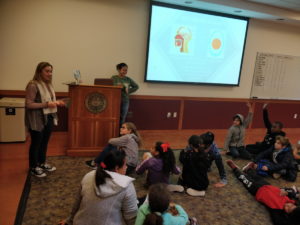 round, the yolk inside the egg slams into the walls of the egg, the same way our brain slams into the walls of our cranium in a head impact. In the end, the 15 foot drop height was quite rough on the designs, as only one egg survived the drops. However – if we had more eggs and more time, we would use the engineering design process, pushing past this initial failure to try a new design and repeat until we succeeded!
round, the yolk inside the egg slams into the walls of the egg, the same way our brain slams into the walls of our cranium in a head impact. In the end, the 15 foot drop height was quite rough on the designs, as only one egg survived the drops. However – if we had more eggs and more time, we would use the engineering design process, pushing past this initial failure to try a new design and repeat until we succeeded!

